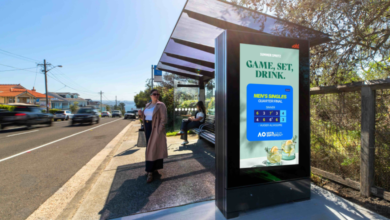How Advanced Lighting Systems Can Improve Emergency Response Times

In an emergency, every second is critical. The difference between a rapid response and a delayed one can have life-altering consequences. While factors like traffic and dispatcher efficiency play significant roles, one often-overlooked element is the effectiveness of an emergency vehicle’s lighting system.
Advanced lighting technology does more than just signal a vehicle’s presence; it is a crucial tool that enhances visibility, communicates urgency, and clears a path for first responders to arrive safely and quickly. This article will explore four key ways that modern lighting systems are revolutionizing emergency response.
Enhancing Visibility in All Conditions
One of the most significant challenges for first responders is navigating through adverse weather and low-light conditions. Heavy rain, dense fog, snow, and nighttime darkness can severely limit a driver’s visibility, making it difficult for the public to see and yield to an approaching emergency vehicle. Modern LED lighting systems are engineered to cut through these challenging environments with unparalleled brightness and clarity. Unlike traditional halogen bulbs, LEDs produce a more intense and focused beam of light that remains highly visible from greater distances.
This ensures that other drivers have more time to recognize the emergency vehicle and react accordingly. Furthermore, the strategic placement and color combinations of emergency vehicle lights are designed based on scientific principles to maximize contrast against various backdrops, whether it’s a bright sunny day or a dark, rainy night. This enhanced visibility is a fundamental first step in reducing response times, as it helps clear the path forward safely and efficiently.
See also: Tech innovations transforming logistics and risk management
Improving Public Awareness and Reaction Time
The primary purpose of emergency lights is to alert the public and command their attention. The effectiveness of this alert directly impacts how quickly drivers and pedestrians yield the right-of-way. Advanced lighting systems utilize sophisticated flash patterns and synchronization to create a sense of urgency that is impossible to ignore.
Studies in traffic psychology have shown that varied and dynamic flash patterns are more effective at capturing human attention than simple, repetitive flashes. Modern systems can be programmed with multiple patterns that can be changed depending on the situation, from a high-speed pursuit to navigating a congested intersection.
By creating a more compelling visual warning, these lights significantly reduce the public’s reaction time. When drivers are alerted sooner and more effectively, they can pull over faster, creating a clearer and safer corridor for the emergency vehicle to pass through, ultimately shaving precious seconds off the response time.
Increasing Officer and First Responder Safety
A faster response cannot come at the expense of safety. The well-being of first responders is paramount, and their lighting systems play a crucial role in protecting them on the road and at the scene. When an emergency vehicle is parked on a busy highway during an incident, it becomes a potential hazard. Advanced lighting systems, including directional arrow sticks and scene lights, are designed to create a secure zone around the incident. These lights guide oncoming traffic safely away from the responders and the scene, reducing the risk of secondary accidents.
Brighter, more visible lights also make the responders themselves more conspicuous, especially when they are out of their vehicles. This heightened safety allows officers and medical personnel to focus entirely on the emergency at hand without constantly worrying about traffic. When responders feel secure, they can perform their duties more efficiently, which contributes to a more effective and ultimately faster resolution of the incident.
Communicating Critical Information Non-Verbally
In chaotic emergencies, communication is key. Advanced lighting systems have evolved to become a form of non-verbal communication, conveying critical information to other responders and the public. For instance, different colors can signify the type of emergency service approaching—red for fire, blue for police, and white for ambulances. At the scene of a large-scale incident involving multiple agencies, specific flash patterns or color combinations can be used to designate command posts, triage areas, or hazard zones.
This visual language helps create order out of chaos, allowing different units to coordinate their efforts without relying solely on radio communications, which can be overwhelmed. For the public, a change in light patterns can signal a change in the situation, such as indicating that it is safe to proceed. This ability to communicate complex information quickly and intuitively helps manage the scene more effectively, ensuring that all resources are deployed efficiently to resolve the emergency faster.



